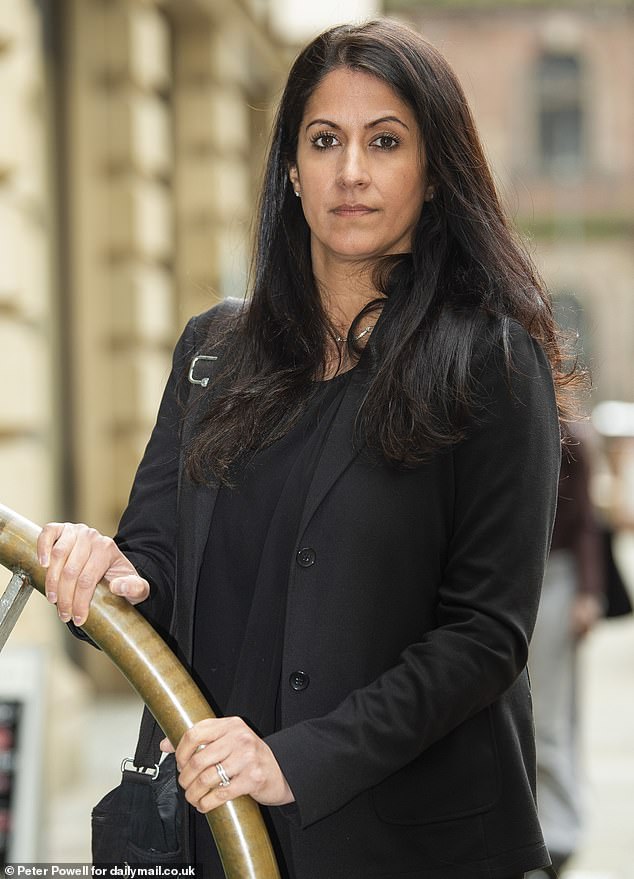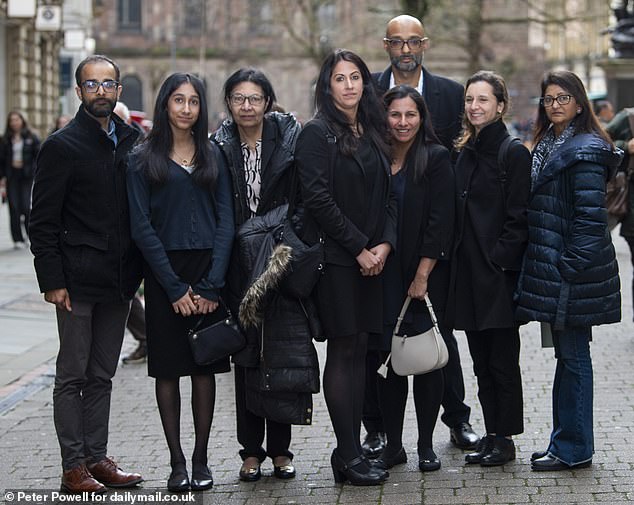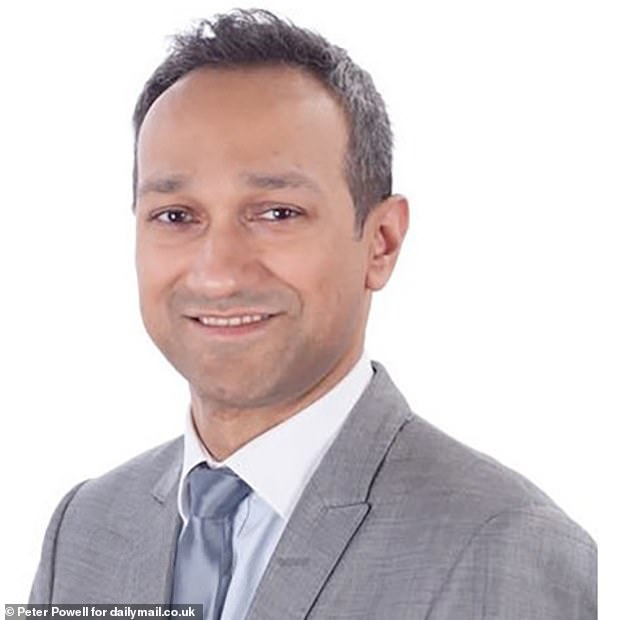A “brilliant” medicine professor and father-of-two died after botched treatment that should never have been carried out, a coroner ruled today.
Professor Amit Patel suffered massive internal bleeding following a procedure for a rare disease in which he was a national expert.
A coroner said Professor Patel’s death was caused by “failures in his care” and that his death was “avoidable”.
According to research, the 43-year-old was one of the most brilliant doctors of his generation and a pioneer of stem cell transplantation.
But in August 2021, the father of two young daughters was admitted to Manchester’s Wythenshawe Hospital with flu-like symptoms suspected to be linked to a throat infection.
Professor Amit Patel (pictured with his daughters) suffered massive internal bleeding following a procedure for a rare disease on which he was a national expert. A coroner said Professor Patel’s death was due to “failures in his care” and that his death was “avoidable”.

The 43-year-old was one of the most brilliant doctors of his generation and a pioneer of stem cell transplantation, according to research (pictured: Prof. Amit Patel and his wife, Dr. Shivani Tanna)
Doctors made a “working diagnosis” that Professor Patel had Still’s disease, a rare inflammatory condition, which was the cause of a life-threatening immune disorder called HLH (haemophagocytic lymphohistiocytosis).
Following a consultation between hospital staff and the national HLH MDT medical advisory panel, it was agreed that Professor Patel would undergo an endobronchial ultrasound (EBUS)-guided biopsy to internally examine his lungs for disorders, including inflammation. This was done on September 2, 2021.
But Professor Patel had also developed disseminated intravascular coagulation (DIC), a rare and serious blood clotting disorder that can cause uncontrollable bleeding.
The doctors had not reported this to the HLH MDT, which would have led the panel to advise against treatment.
Coroner Zak Golombek said the hospital’s failure to provide all relevant information meant recommendations were made using an “incomplete clinical picture”.
He said: ‘The deceased underwent an EBUS procedure following a recommendation from the HLH National MDT.
‘This recommendation was based on an incomplete presentation of the deceased’s clinical case and therefore should never have been made.
‘If the HLH national MDT had received all the relevant and readily available information, the procedure would not have gone ahead and the deceased would not have died on 28 October.

His wife, Dr Shivani Tanna, told the inquest she had to keep him alive by checking his observations and fluids herself, adding that he collapsed when she saw him in intensive care.

Amit Patel’s wife Shivani is pictured with her family at the inquest into Professor Patel’s death on Thursday. Pictured left to right: Alchil Tanna, Tia Patel, Nita Thakrar, Shivaji Tanna, Anisha Tanna, Elen Stritch and Jayshree Wakerja.
The coroner said: “In my judgment these were not systemic failings but individual failings.”
Golombek, sitting at Manchester Coroner’s Court, also criticized the hospital’s consent procedure and how doctors treated Patel as a colleague and not a patient.
He said: ‘The conversation with Professor Patel on September 2 did not include sufficient reference to his now established DIC and the effects this could have on the procedure itself.
‘The consent process was too close to the start of the procedure. This did not allow Professor Patel to calculate, digest and discuss the evolution of the clinical picture and the procedure itself.
‘And this has been the common thread of this case: Professor Patel was not treated like an ordinary patient.
‘Despite his undoubted wealth of medical knowledge, he was primarily a husband and father, and was not given the opportunity to consider the procedure itself and its effects on his clinical course.
“These two factors contributed more than minimally to the deceased’s death on the balance of probabilities.”
Professor Patel suffered internal bleeding resulting in “significant respiratory compromise” and was later transferred to Manchester Royal Infirmary, where he died on 28 October 2021.
Mr Golombek – summarizing the hearing – said: ‘Professor Patel’s case was not properly presented to the HLH national MDT. This was a failure to care for him.
‘As a result, the HLH national MDT did not recommend an EBUS after considering all relevant clinical information.
‘If all the relevant information had been available, such a procedure would not have been recommended.
“It follows that, but for this ruling, the EBUS would not have taken place at the time it did on 2 September.
‘Professor Patel had developed DIC on September 2 and should have been expressly informed of this before the EBUS procedure.

In August 2021, Professor Patel was admitted to Manchester’s Wythenshawe Hospital with flu-like symptoms suspected to be linked to a throat infection (Wythenshawe Hospital file image).

Professor Amit Patel was a pioneer of stem cell transplantation and an expert hematologist before his death at Manchester’s Wythenshawe Hospital.
‘Professor Patel did not receive appropriate consent for this procedure; the consent process was too rushed and too close to the start of the procedure itself.
‘Furthermore, the operating doctor did not provide Professor Patel with the same level of care that he would provide to any other non-medical patient.
And finally, Professor Patel’s death was caused by failures in his care and therefore his death was avoidable.
“I also find that the failures identified were failures to provide basic medical care to a person in a dependent position.”
The coroner also praised Professor Patel’s work, saying: “He was clearly a brilliant man whose legacy will go beyond his academic and professional achievements.”
“I hope that in time the memories you have all shared will shine brightly beyond this period of time that has been the subject of my investigations.”

